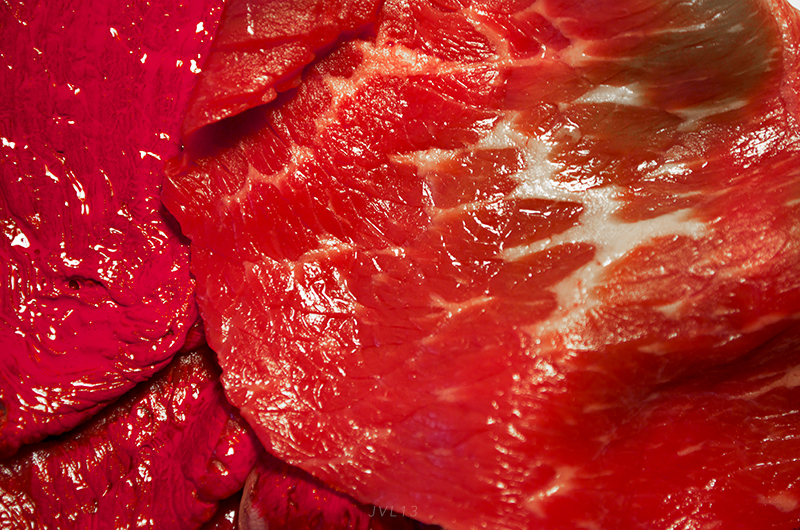When one thinks of California, one thinks of Hollywood, the Golden Gate Bridge and West Coast hip hop. Right? Not completely. True as it may be that the Golden State contributed the gangsta rap and G-funk sub-genres to hip hop music in the late 1980′s and early 1990′s, but long gone are the days when hip hop bearing the ‘Made in Cali’ tag was in its prime. Indeed, the Californian rap dynasty originated by the likes of Ice-T, Too Short, Ice Cube, Dr. Dre and Eazy-E came to an end with the untimely death of the illustrious Tupac Shakur, amidst a heavily media-fueled bi-coastal feud. The ensuing demise of Death Row records, iconic label home to Tupac, as well as Dr. Dre and Snoop Dogg at the time, created a void atop the throne of the West Coast.
Some fifteen years later, many have tried but no artist has been successful in breathing life back into West Coast hip hop. Though the aforementioned legends will always have their place in the pantheon of hip hop, the proverbial torch has been passed on to none other than Top Dog Entertainment (TDE) recording artist Kendrick Lamar.
If TDE, with its impressive roster (Ab-Soul, Schoolboy Q and Jay Rock for those in the know), is a modern-day incarnation of Death Row, then Kendrick Lamar is undoubtedly the Tupac of this generation. In fact, in the music video for the song “Hiiipower” off of his previous album Section 80, Compton, California native Lamar claims that Tupac Shakur himself came to him in a dream and made an appeal to him not to let his legacy die.
Hip hop fans can be unforgiving. But even despite the pressure surrounding the Aftermath/Interscope-sponsored release of good kid, m.A.A.d city after the acclaim of independent release Section 80, Kendrick delivers both critically and commercially. His major label debut was arguably the best hip hop album of 2012, not to mention that it is well on its way to reaching platinum certification, a feat which is reserved nowadays to the Jay-Z’s, Drakes, Lil Waynes, Kanye Wests, and other mainstream powerhouses of the rap game.
However, while the mainstream has taken notice of Lamar’s talent, he has not forsaken the mission entrusted to him by Lesane Parish Crooks. Research that name.
Similarly to the late Shakur, Lamar is introspective (“Bitch, Don’t Kill My Vibe”), proud of his hometown (“Compton”), and reminiscent of youthful mischief (“Money Trees”) and romantic liaisons (“Sherane”, “Poetic Justice”). Also like Shakur and other regional predecessors, he incorporates stereotypical elements of gangsta rap — drugs, alcohol, violence,and gang culture — but he addresses these in his own way. He does not condone drugs, but rather shares his experience with cocaine-laced marijuana on the G-funk-inflected “m.A.A.d city”. His hit single “Swimming Pools (Drank)” does not, contrary to popular belief, encourage binge drinking, but rather explains how a family history of alcoholism is the reason why he does not drink. He does not boast an affiliation to the Crips or the Bloods, but advocates for the casualties of gang crossfire in (“Sing About Me, I’m Dying of Thirst”), all the while acknowledging that gangs, violence and criminality were an inevitable reality of his environment, and that as a youngster, he too has thrown up gang signs, harassed people wearing clothing of the “wrong” colors, and partaken in a burglary (“Peer Pressure”).
Kendrick’s vantage point — “I’m in the dead fucking center looking around” cf. “Ab-Soul’s Outro” on Section 80 — grants him an alternative take on life in Compton that is bundled into a vivid autobiographical package, complete with skits, voiced by his parents and friends, that reenact anecdotes from his childhood. This gives the album a cinematic quality, hence the tagline “A Short Film By Kendrick Lamar.” In this vein, the coming-of-age aspect of good kid, as well as the protagonist’s struggle to stay clear of a seemingly inescapable street life, evoke the plots of director John Singleton’s cult films “Boyz N The Hood” and “Poetic Justice” that also recount the kinds of tragedies which seem to be part of everyday life in the ghettos of the Los Angeles.
Overall, Kendrick Lamar is a multimodal MC: storyteller, macho at times, and conscious (for lack of a better word). Yet he is lyrical throughout, to the extent that whether it be a beat from a longtime collaborator like THC, Terrace Martin or Sounwave, or a household name like Pharrell Williams or Just Blaze, the production never outshines the lyrics; in fact, the opposite is often true.
Like NWA’s Straight Outta Compton, Dr. Dre’s The Chronic, Snoop’s Doggystyle or even The Game’s The Documentary, good kid, m.A.A.d city is an ode to the West Coast, but more importantly, it is a seminal work that has set the bar very high for rap albums in the years to come. Kendrick Lamar’s album makes a great case for the importance of creative control, which rappers and pop musicians in general often lack in light of their commercial releases.
If there is any shade to be cast on this bright moment in Kendrick Lamar’s career, it is the possibility that the follow-up to good kid, m.A.A.d city will pale in comparison to this classic. But if the various songs on which Lamar has been featured recently are any indication, we can expect him to keep pushing the frontiers of lyricism and quality content in hip hop music. If he keeps it up, then soon, when one thinks of California, they will think of the infectious hook of bonus track/single, “The Recipe”: women, weed and weather.
Written by Yannick Detchou


